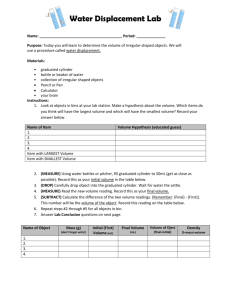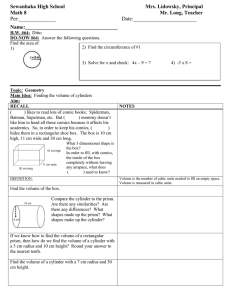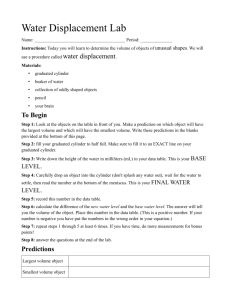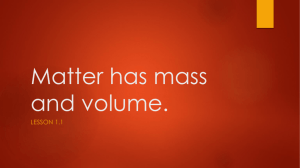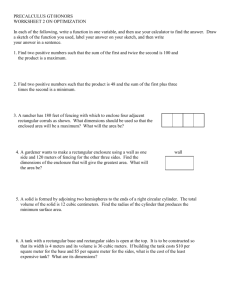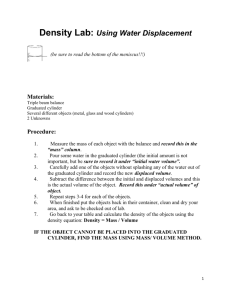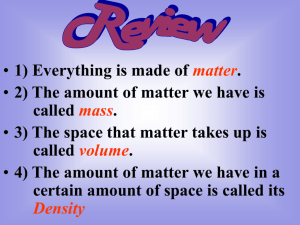Mass, Volume, Density Study Guide - Science 8
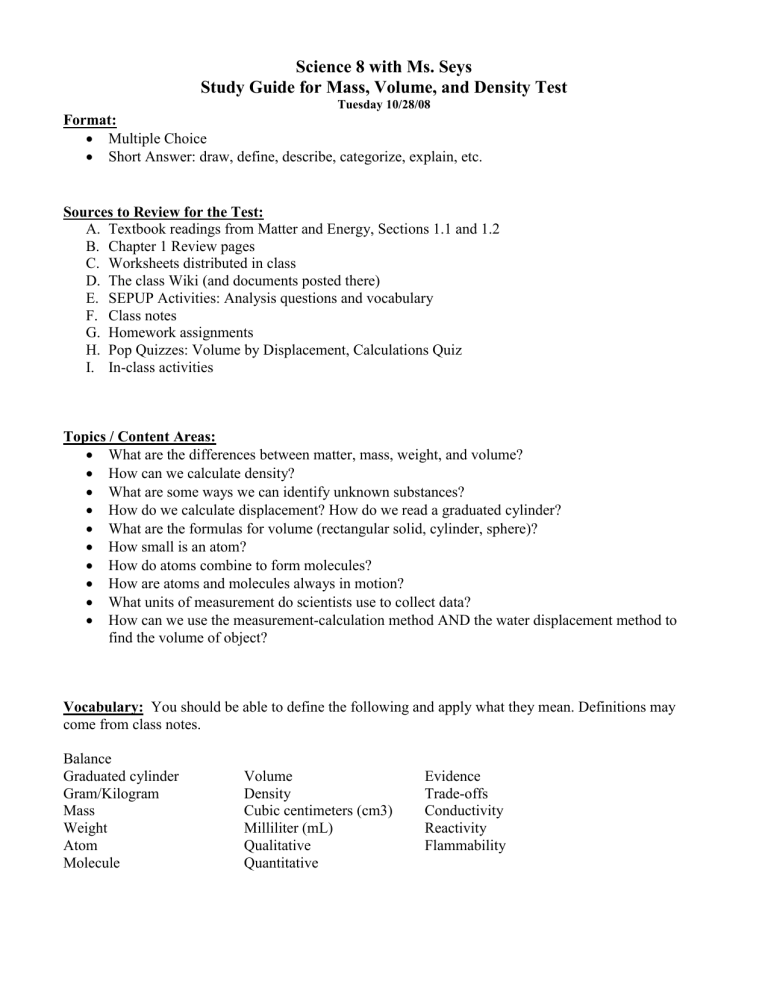
Science 8 with Ms. Seys
Study Guide for Mass, Volume, and Density Test
Tuesday 10/28/08
Format:
Multiple Choice
Short Answer: draw, define, describe, categorize, explain, etc.
Sources to Review for the Test:
A.
Textbook readings from Matter and Energy, Sections 1.1 and 1.2
B.
Chapter 1 Review pages
C.
Worksheets distributed in class
D.
The class Wiki (and documents posted there)
E.
SEPUP Activities: Analysis questions and vocabulary
F.
Class notes
G.
Homework assignments
H.
Pop Quizzes: Volume by Displacement, Calculations Quiz
I.
In-class activities
Topics / Content Areas:
What are the differences between matter, mass, weight, and volume?
How can we calculate density?
What are some ways we can identify unknown substances?
How do we calculate displacement? How do we read a graduated cylinder?
What are the formulas for volume (rectangular solid, cylinder, sphere)?
How small is an atom?
How do atoms combine to form molecules?
How are atoms and molecules always in motion?
What units of measurement do scientists use to collect data?
How can we use the measurement-calculation method AND the water displacement method to find the volume of object?
Vocabulary: You should be able to define the following and apply what they mean. Definitions may come from class notes.
Balance
Graduated cylinder
Gram/Kilogram
Mass
Weight
Atom
Molecule
Volume
Milliliter (mL)
Qualitative
Quantitative
Evidence
Density Trade-offs
Cubic centimeters (cm3) Conductivity
Reactivity
Flammability
Sources to Review for the Quiz:
Topics / Content Areas:
SEPUP Activities:
7: Identifying Solids
8: Measuring Volume
9: Measuring Mass; Calculating Density
11: Choosing a Cleaner
Study Tips:
1. What safety rules should you always follow while doing a science laboratory?
2. Define the vocabulary. (Note: you don’t need to memorize these, but you should have an idea of what they mean so that you can use them in your writing)
3. Practice finding volume and calculating density of objects.
Sample Questions:
1.
What is the standard unit for measuring mass?
2.
How could you find the volume of a rectangular box?
3.
Why is the volume of a rectangular object measured in cubic units?
4.
If you could break up a carbon dioxide molecule, would you still have carbon dioxide?

